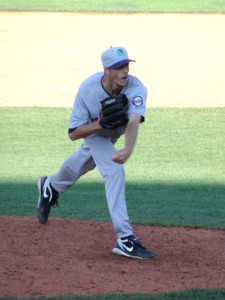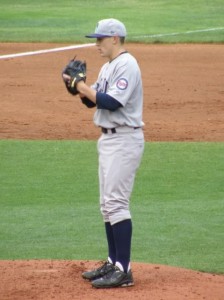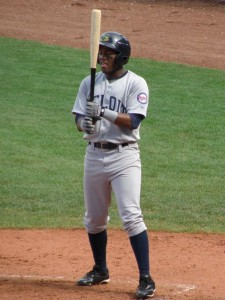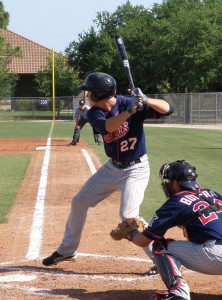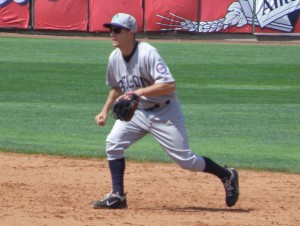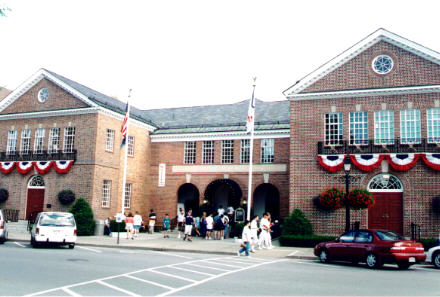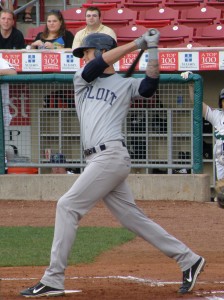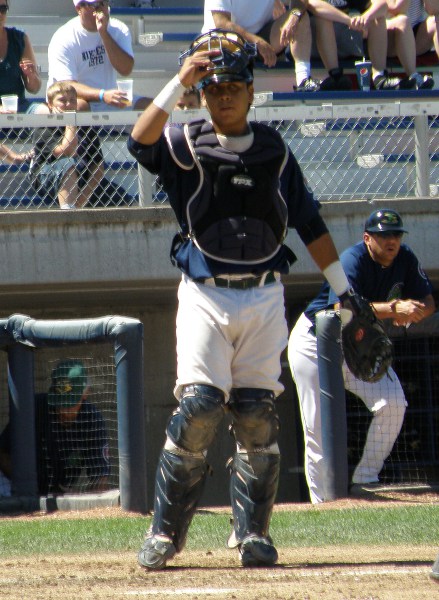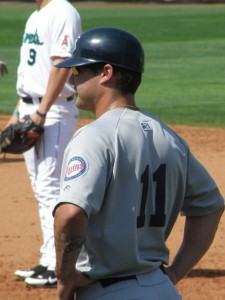This is the last of this six-part series examining the players in the Twins organization that likely will spend part of the upcoming summer in Cedar Rapids during the Kernels first year as the Twins Class A Midwest League affiliate.

In the first five parts, we’ve covered all of the position players and the pitchers most likely to fill starting pitching roles. We wrap things up now by looking at a rather lengthy list of relief pitchers.
In the 2012 amateur draft, the Twins had 15 picks in the first 12 rounds and they used nine of those picks to select college age relief pitchers. As a result, the organization starts 2013 with a lot of guys who have one year of rookie league level experience, but who are about 22 years old and therefore really need to get moving up the full season organizational ladder. That means a lot of the descriptions below will sound pretty similar.
The draft class of 2012 should be joined by some pretty talented pitchers that have already been in the organization a couple of years and, together, they should make the Kernels bullpen pretty darn good this season.
Luke Bard – Age 22 – Throws Right
2012: Fort Myers (Rookie – GCL) and Elizabethton (Rookie – Appy)
| G | GS | ERA | IP | WHIP | K | H/9 | K/9 | BB/9 |
| 7 | 1 | 3.86 | 7.0 | 1.714 | 7 | 6.4 | 9.0 | 9.0 |
Bard, the brother of Red Sox pitcher Daniel Bard, was chosen by the Twins as a Supplemental 1st round pick (42nd pick overall) out of Georgia Tech. Like a number of others on this list, Bard was a relief pitcher in college who very possibly will get some opportunities to start in the Twins organization. Bard was a late signee and had a minor injury or two during the year. As a result, he got very little work in at the professional level in 2012, though he did make a handful of appearances at both Rookie League levels and actually pitched better at Elizabethton than he did during his time with the GCL Twins.
If the Twins do want to see what he can do as a starting pitcher, I could see them working with him on the transition in extended spring training and then getting a few starts at Elizabethton in June. He reportedly throws his fastball in the mid 90s, has a strong slider and decent change up, as well. If they’re as good as reported, he’ll be up with the Kernels in 2013, either in their bullpen or their rotation.
(EDIT: If you haven’t already, you should check out Seth Stohs’ interview with Bard over at TwinsDaily.com.)
Mason Melotakis – Age 21 – Throws Left
2012: Elizabethton (Rookie – Appy) and Beloit (Class A – MWL)
| G | GS | ERA | IP | WHIP | K | H/9 | K/9 | BB/9 |
| 20 | 0 | 1.88 | 24.0 | 0.958 | 34 | 6.4 | 12.8 | 2.2 |

Melotakis was a 2nd round pick in 2012 out of Northwestern State University of Louisiana. He made 20 appearances (all in relief) for Elizabethton and Beloit, combined. Melotakis pretty much cut right through hitters at both levels of competition, though hitters had more success making contact off of him in Beloit.
Melotakis could justifiably start the season in Fort Myers, based on the way he dominated hitters at both Rookie and Class A levels in 2012. At the same time, he didn’t spend enough time in Class A to be 100% positive he’s ready to face high-A hitters.
If Melotakis does start the season with the Kernels, don’t expect him to be in town too long. I would guess he’ll be on a fast track with the organization, as long as he continues to dominate the way he has so far.
J.T. Chargois – Age 22 – Throws Right
2012: Elizabethton (Rookie – Appy)
| G | GS | ERA | IP | WHIP | K | H/9 | K/9 | BB/9 |
| 12 | 0 | 1.69 | 16.0 | 0.938 | 22 | 5.6 | 12.4 | 2.8 |
Chargois was also a 2nd round pick of the Twins in the 2012 draft, coming out of Rice University. JT hits the mid 90s with his fastball and has a good slider to go with it.
Chargois was too much for Rookie league hitters to handle and while he could probably be held in extended spring training, I’d expect him to come north with Cedar Rapids unless there simply isn’t room for him on the roster. He has a lot of potential and I just think the Twins will want to challenge him with Midwest League hitting to see whether he could move up the ladder sooner rather than later.
Zack Jones – Age 22 – Throws Right
2012: Elizabethton (Rookie – Appy) and Beloit (Class A – MWL)
| G | GS | ERA | IP | WHIP | K | H/9 | K/9 | BB/9 |
| 18 | 0 | 2.25 | 20.0 | 1.100 | 34 | 5.0 | 15.3 | 5.0 |
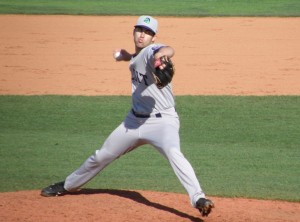
The Twins used their 4th round pick in the 2012 to draft Jones out of San Jose State University. At just 6’1”, Zack is not as big as many of the other relief pitchers the team drafted, but his stature doesn’t prevent him from hitting the upper 90s with his fastball.
Jones stayed in Elizabethton only long enough to pitch six innings and he left town with a perfect 0.00 ERA. The Midwest League was more challenging, in terms of giving up runs, but his strikeout rate actually increased at the higher level, where he struck out 16.1 hitters per nine innings. He does walk a few hitters, but if he can work on the control, Jones could fly up the organizational ladder. In fact, it wouldn’t be surprising if the Twins decided he showed enough in Beloit to warrant starting 2013 at high-A in Fort Myers.
Tyler Duffey – Age 22 – Throws Right
2012: Elizabethton (Rookie – Appy)
| G | GS | ERA | IP | WHIP | K | H/9 | K/9 | BB/9 |
| 12 | 0 | 1.42 | 19.0 | 0.632 | 27 | 4.7 | 12.8 | 0.9 |
Duffey was drafted by the Twins in the 5th round of the 2012 draft out of Rice University. Unlike many of the other relief pitchers drafted in the 2012 class, Duffey did not pitch at both Rookie league levels after signing. He got all of his regular season work with the GCL Twins in Fort Myers and certainly put up impressive numbers there. (See correction below.)
Tyler demonstrated terrific control, walking just two hitters over the course of his 19 innings of work. On the other hand, he struck out 27 hitters. Of course, as a college-age draftee, he was older than most of the hitters he faced, so we have to consider that factor in looking at his numbers.
Ordinarily, I’d say a guy like Duffey is likely to start the season in Cedar Rapids, but there’s room for only so many pitchers on the Kernels roster and there may just be too many guys ahead of him who did get work at Elizabethton last year. If that’s the case, Duffey would stay behind in extended spring training and go to E’town in June, but look for him to arrive in CR later in the summer.
(Correction: All of Duffey’s regular season numbers were put up in Elizabethton, not the GCL, and he got called up to Beloit for their playoff series and was actually credited with the W in their sole postseason win over Clinton. This clearly makes Duffey likely to be Cedar Rapids bound to start the season. Thanks for the correction in the comments section, Wild Rice.)
Christian Powell – Age 21 – Throws Right
2012: Elizabethton (Rookie – Appy)
| G | GS | ERA | IP | WHIP | K | H/9 | K/9 | BB/9 |
| 10 | 0 | 5.74 | 15.2 | 1.596 | 20 | 10.3 | 11.5 | 4.0 |
The Twins selected the 6’5” Powell in the 8th round of the 2012 draft out of the College of Charlston and he made just 10 relief appearances for Elizabethton during the summer. Powell had limited success, giving up more than a hit per inning and not demonstrating terrific control. Christian did demonstrate his ability to miss bats, however, as he struck out 20 hitters in just 15.2 innings of work.
Powell could be held back in extended spring training, rather than coming north with the Kernels and could well start his season back in Elizabethton in June, but I’d guess he’s likely to make a Kernels debut before the end of the season.
D.J. Baxendale – Age 22 – Throws Right
2012: Elizabethton (Rookie – Appy) and Beloit (Class A – MWL)
| G | GS | ERA | IP | WHIP | K | H/9 | K/9 | BB/9 |
| 17 | 0 | 0.96 | 18.2 | 0.804 | 31 | 6.3 | 14.9 | 1.0 |
Baxendale was drafted in the 10th round of the 2012 amateur draft out of the University of Arkansas and worked his way through two levels of the Twins system after signing his contract. He clearly outclassed the competition in Elizabethton, striking out more than two hitters per inning in his six appearances there. He gave up exactly one hit before being promoted to Beloit.
DJ pitched well with the Snappers, also, but hitters did make more consistent contact off him. In fact, Baxendale gave up more than a hit per inning while pitching for the Snappers. He continued to strike out a lot of hitters, however. He only walked one batter while in Beloit, which is one more batter than he allowed to hit a home run off him.
It’s possible the Twins could have him jump straight to high-A ball to start 2013 in Fort Myers, but he only pitched 18.2 innings total after signing with the Twins last season, so I would think he would start the year in Cedar Rapids. It’s also quite possible the Twins might consider seeing if Baxendale might be a candidate to convert to a starting pitcher and, if so, it would seem doing so in Class A would make the most sense.
Dallas Gallant – Age 23 – Throws Right
2012: Elizabethton (Rookie – Appy) and Beloit (Class A – MWL)
| G | GS | ERA | IP | WHIP | K | H/9 | K/9 | BB/9 |
| 14 | 0 | 1.62 | 16.2 | 1.020 | 22 | 4.9 | 11.9 | 4.3 |
Gallant was selected by the Twins in the 23rd round of the 2010 draft out of Sam Houston State University and was sent to Elizabethton to finish out the summer of 2010 after signing. He pitched well in his handful of games there, striking out 15 batters in 13.1 innings. 2011 was a lost season to Dallas as he underwent Tommy John surgery that spring.
As you would expect, the Twins started Gallant off slowly in 2012, keeping him in extended spring training and giving him five appearances with Elizabethton, where he was fairly dominant (as a 23-year-old pitcher should be), before promoting him to Beloit for the rest of the summer. He also pitched well for the Snappers, striking out almost 12 batters per nine innings, but walked a few hitters, as well.
I hesitated to include Gallant on this list. Given the bottleneck of younger pitchers behind him, it just seems to me that he’s likely to start the season at high-A Fort Myers. He turns 24 years old later in January, so he’s a bit older than the other pitchers on this list, but given the year lost to injury and the Twins’ methodical approach to advancement, he certainly could at least start the season with the Kernels.
Joshua Burris – Age 21 – Throws Right
2012: Elizabethton (Rookie – Appy)
| G | GS | ERA | IP | WHIP | K | H/9 | K/9 | BB/9 |
| 18 | 0 | 1.75 | 36.0 | 1.250 | 40 | 6.0 | 10.0 | 5.2 |
Considering that the Twins drafted Burris out of LSU-Eunice in the 17th round back in 2011, he’s actually relatively young and will be just 21 throughout the 2013 season. He didn’t sign in time to get any innings in the summer he was drafted, but averaged two innings per relief appearance for Elizabethton in 2012.
Josh’s name can be found in many Twins top prospects lists as he’s demonstrated both a solid mid 90s fastball and an effective curve. Like many of his peers at this level, he’s had no trouble striking out Rookie level hitters, but has also walked a few, too. Since he was routinely used for multiple innings last season, there is speculation that Burris could be considered for a switch to a starting pitcher role at some point this season.
Chris Mazza – Age 23 – Throws Right
2012: Fort Myers (Rookie – GCL) and Elizabethton (Rookie – Appy)
| G | GS | ERA | IP | WHIP | K | H/9 | K/9 | BB/9 |
| 18 | 0 | 2.05 | 30.2 | 0.946 | 28 | 7.9 | 8.2 | 0.6 |
Mazza didn’t sign soon enough following being drafted by the Twins in the 27th round of the 2011 draft to get any work in that summer, but he did pitch at both Rookie league levels in 2012. At 6’4” and just 175 pounds, Mazza has plenty of room to grow in to his frame, but he did get off to a good start in his first professional season.
Chris split his innings almost equally between the GCL Twins and Elizabethton, with similar results. He did give up more runs at Elizabethton, but most importantly he maintained his outstanding strikeout/walk ratio (13.00 K/BB at FtM and 15.00 K/BB at E’town). Mazza has excellent control and misses bats and that’s a combination that will move him up the ladder with the Twins.
There are other pitchers that will likely spend time in Cedar Rapids this summer, though it’s hard to say right now what role(s) they may fill on the Kernels’ pitching staff.
Brett Lee is 22 and was drafted in the 10th round in 2011. He threw 43.2 innings for Elizabethton in 2012 over 16 games. Four of his 16 appearances were starts. He struck out 48 hitters and walked 12.
Andrew Ferreira is a 22 year-old lefty the Twins drafted in the 32nd round last year out of Harvard. He struck out 13 hitters and walked seven in his 10 innings of work for Elizabethton in 2012.
Kaleb Merck is also 22 and was drafted out of TCU by the Twins one round after Ferreira last year. Merck struck out 28 hitters in his 24.1 innings at Elizabethton. Obviously, both pitchers could easily spend time in Cedar Rapids this summer.
The 2013 Kernels bullpen should be a real strength and could easily include several future Big League pitchers. Some of these guys could be on fast tracks through the organization, however, so don’t be too surprised if they’re promoted relatively quickly.
That’s a wrap for this series. I hope you’ve enjoyed reading about these young men and that you join me in looking forward to the 2013 season of the Cedar Rapids Kernels!
If you missed any of the first five parts of the series, you can click back via the links below:
- Part 1 – catchers
- Part 2 – corner infielders
- Part 3 – middle infielders
- Part 4 – outfielders
- Part 5 – starting pitchers
– JC
P.S. Seth Stohs’ 2013 Minnesota Twins Prospect Handbook is now available for order! If you want to know more about the prospects we’ve profiled in this series, Seth and his fellow writers annually provide statistics and write-ups on pretty much every Twins prospect at all levels of the organization. You can order your copy of the Handbook by clicking here.


